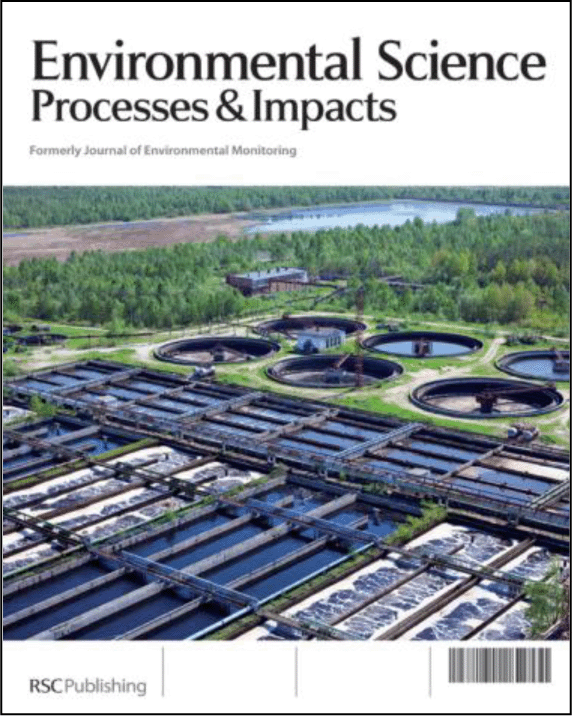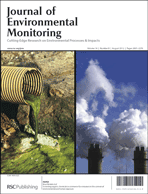This month sees the following articles in the Journal of Environmental Monitoring that are in the top ten most accessed:
Emerging investigators contributors 2012
J. Environ. Monit., 2012, 14, 1745-1753
DOI: 10.1039/C2EM90032G
Investigations of mercury concentrations in walleye and other fish in the Athabasca River ecosystem with increasing oil sands developments
Marlene S. Evans and André Talbot
J. Environ. Monit., 2012, 14, 1989-2003
DOI: 10.1039/C2EM30132F
Potential impacts of disinfection processes on elimination and deactivation of antibiotic resistance genes during water and wastewater treatment
Michael C. Dodd
J. Environ. Monit., 2012, 14, 1754-1771
DOI: 10.1039/C2EM00006G
Contamination of Canadian and European bottled waters with antimony from PET containers
William Shotyk, Michael Krachler and Bin Chen
J. Environ. Monit., 2006, 8, 288-292
DOI: 10.1039/B517844B
Preparation and measurement methods for studying nanoparticle aggregate surface chemistry
Christopher Szakal, James A. McCarthy, Melissa S. Ugelow, Andrew R. Konicek, Kacie Louis, Benjamin Yezer, Andrew A. Herzing, Robert J. Hamers and R. David Holbrook
J. Environ. Monit., 2012, 14, 1914-1925
DOI: 10.1039/C2EM30048F
A novel passive water sampler for in situ sampling of antibiotics
Chang-Er Chen, Hao Zhang and Kevin C. Jones
J. Environ. Monit., 2012, 14, 1523-1530
DOI: 10.1039/C2EM30091E
Impact of agglomeration and different dispersions of titanium dioxide nanoparticles on the human related in vitro cytotoxicity and genotoxicity
Zuzana Magdolenova, Dagmar Bilaničová, Giulio Pojana, Lise M Fjellsbø, Alexandra Hudecova, Katarina Hasplova, Antonio Marcomini and Maria Dusinska
J. Environ. Monit., 2012, 14, 455-464
DOI: 10.1039/C2EM10746E
Chromium fractionation and speciation in natural waters
Catarinie Diniz Pereira, João Gabriel Techy, Edgard Moreira Ganzarolli and Sueli Pércio Quináia
J. Environ. Monit., 2012, 14, 1559-1564
DOI: 10.1039/C2EM10949B
Sensitive immunoassay detection of multiple environmental chemicals on protein microarrays using DNA/dye conjugate as a fluorescent label
Ziyan Fan, Young Soo Keum, Qing X. Li, Weilin L. Shelver and Liang-Hong Guo
J. Environ. Monit., 2012, 14, 1345-1352
DOI: 10.1039/C2EM10956E
Indoor air in schools and lung function of Austrian school children
Peter Wallner, Michael Kundi, Hanns Moshammer, Kathrin Piegler, Philipp Hohenblum, Sigrid Scharf, Marina Fröhlich, Bernhard Damberger, Peter Tappler and Hans-Peter Hutter
J. Environ. Monit., 2012, 4, 1976-1982
DOI: 10.1039/C2EM30059A
Why not take a look at the articles today and blog your thoughts and comments below.
Fancy submitting an article to JEM? Then why not submit to us today or alternatively email us your suggestions.
Comments Off on Top ten most accessed articles in June
 Important news re: Journal of Environmental Monitoring
Important news re: Journal of Environmental Monitoring

















